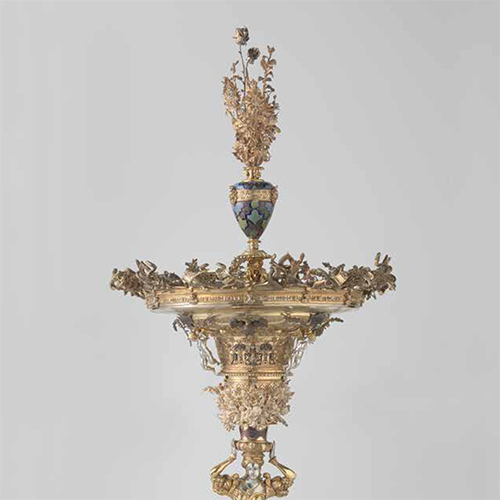Wenzel Jamnitzer’s Centrepiece and the Goldsmith’s Secret
DOI:
https://doi.org/10.52476/trb.9742Abstract
This article focuses on the ‘Merkelsche Tafelaufsatz’, a large centrepiece made by the Nuremberg-based Wenzel Jamnitzer in 1549. The piece is known for its numerous life casts of small creatures and flowers – real plants and animals placed in a mould with material that was heated, causing the original to be calcined. The void thus created was then filled with silver. Earlier research based on a contemporary French treatise on the subject illustrates how these life casts, especially the animals, could have been made. This article focuses on the casting of the flowers. An experiment recreating the intricate aquilegia in the crowning piece shed light on the casting method the goldsmith and his workshop used to achieve the delicate petals and fragile pistils and stamens. The plants and animals on the centrepiece are identified, and other techniques involved in creating the centrepiece as a whole, are described and examined. The cast ornaments, the paint on some of the life casts and the reinforcement of the main figure are discussed. The article concludes by demonstrating that the dedication cartouche, always thought to have been left empty, must have borne an inscription as some of the letters from it have been reconstructed with analytical techniques.
Downloads







